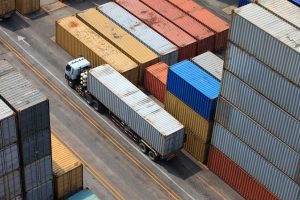We know as ferroalloys iron alloys that have a constituent element other than carbon such as manganese, potassium, molybdenum or silicon. Some of the more common ferroalloys are ferromanganese, silico-manganese and ferrochrome.
These mixtures allow for improved iron or steel properties, always in accordance with their end use. Ferroalloys therefore have many benefits, the reason for their widespread use in the iron and steel industry.
However, their handling and transport are particularly delicate in terms of environmental impact, due to being substances that give off toxic gases and dust such as arsine and phosphine They are also very sensitive to conditions such as humidity and can also have flammable or explosive reactions.
Ferroalloys and environmental issues
The production and handling of ferroalloys poses different issues in terms of air pollution, waste and water pollution. Below we will look at the environmental challenges related to the handling of ferroalloys and several possible solutions.
Atmospheric pollution
Ferroalloys can emit gases such as carbon and nitrogen oxides into the atmosphere. Here are some of the actions necessary to counteract these emissions:
- Storage and handling in closed buildings and vehicles.
- The installation of filters to remove the fumes from casting the furnaces as well as in the crushing and screening areas prior to the dispatch of the ferroalloys.
- Installation of closed enclosures for the capture of fines in truck loading.
Water pollution and liquid effluents
The production process of ferroalloys also generates wastewater or sludge that must be treated to comply with environmental legislation. There must be a facility to treat the sludge from the purification of the furnace fumes and for the recirculation of the water to the purifiers.
However, these issues related to wastewater and effluents affect production more than transport.
Waste and sludge
Gases carry impurities during the heat treatment of ferroalloys that must be captured and recycled or deposited.
- If the waste is recyclable, it should be recycled in the same place where it was generated. However, whenever this is not feasible, it should be sent to an external recycling plant.
- If it is not recyclable, the environmental impact must be minimised by being deposited at the place it was produced or somewhere as close as possible to it.
Facilities are required In the particular case of ferroalloys for briquetting the fines from filters and sludge, for easy handling and reuse where appropriate.
Ferroalloy transport with minimal environmental impact
With all this in mind, ferroalloys must be handled with care during every stage, not only in production but also in when being handled and transported, using the best practices and techniques to minimise environmental impact.
The following good practices can considerably minimise the emissions of polluting particles and dust during the storage and packaging of raw materials.
- Storage in watertight containers.
- Reception of raw materials damp and/ or in closed vehicles.
- The machinery and equipment used for the handling of these raw materials must also be isolated and closed. The installation of dust and particle capture systems should also be studied.
- They should be handled in facilities equipped with ventilation and dust removal equipment. Subsequently, there must be resources in place for the handling of these wastes or their regrouping.
- The discharge of powdery materials due to free fall must be avoided at all times during transport.
For gaseous emissions of substances that cannot be treated by the aforementioned primary measures, other ones will be used, such as electrostatic precipitators, scrubbers, bag filters, chemical or physical-chemical processes to minimise their emissions.
With all this in mind, the management of ferroalloys should not be left in the hands of just anyone. At Bilogistik we provide the transport of industrial bulks and ferroalloys complying with all safety and environmental regulations. We have the experience and the necessary equipment for the transport of ferrous products and ferro-alloys to ensure that nothing fails during your production process.


